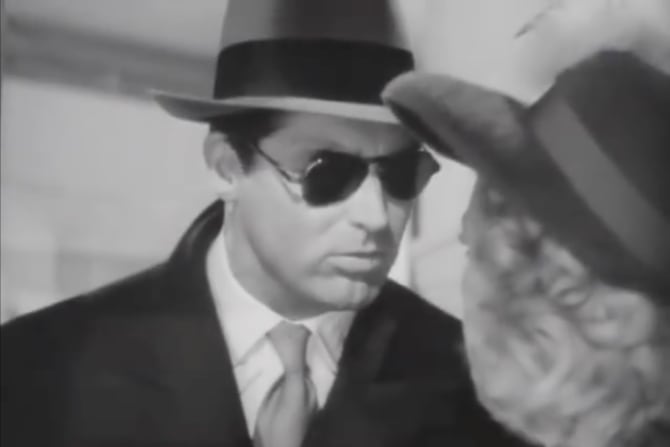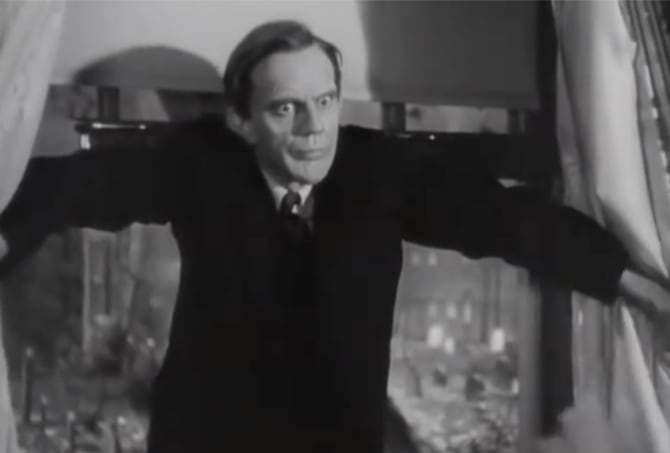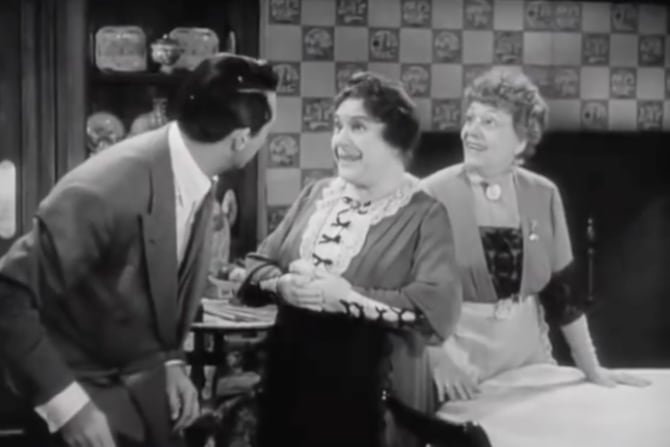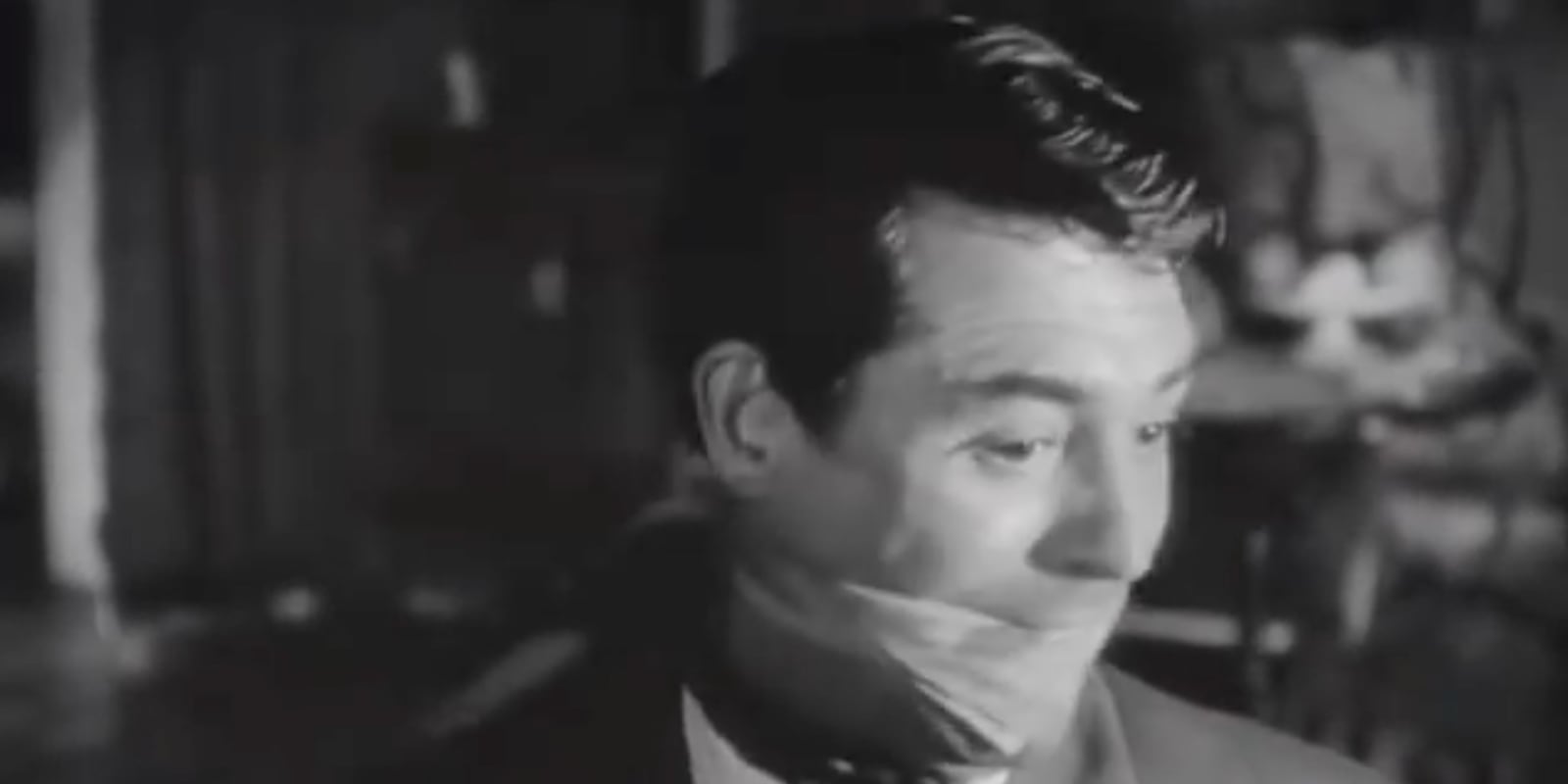Think about movies from the 1940s and, assuming you've even seen one, whatever you're thinking of probably seems quaint. Fast-talking, a black and white color palette, and maybe a variety of hats unmatched since may come to mind.
Unless you're like me, you probably don't think of 1944's Arsenic and Old Lace. This is a movie that is very much a product of its time, but at the same time seems ahead of its time in ways.
A dark comedy with slapstick sensibilities, there are still surprisingly tense moments that make it feel urgent, even 75 years later.
The Good
Arsenic and Old Lace stars Cary Grant as Mortimer Brewster, a writer famous for putting down marriage. Despite this, the film kicks off with Mortimer and his fiancé Elaine Harper (Priscilla Lane) at city hall ready to get married.
This is a drop in the bucket of the overall film, but Mortimer's anxiousness to get on with his honeymoon is a major source of the film's momentum.

Before Mortimer and Priscilla can head off for their honeymoon, he needs to check in on his two aunts, Martha (Jean Adair) and Abby (Josephine Hull). He also needs to make arrangements for his brother 'Teddy Roosevelt' Brewster (John Alexander) who lives with the two aunts.
Of course, Martha and Abby have a surprise of their own, though they don't intend to spring it on Mortimer. They have an unusual habit: The two women welcome men without family or a place to go with the promise of a room for rent.
They don't actually have a room to rent. No, instead they poison the men to put them out of their misery. They do it quite cheerfully as well.
This is a comedy as dark as they come with initial laughs provided at the expense of a body hidden in the window seat. Cary Grant is at his frantic, scenery-chewing best, working his hardest for laughs that other actors might take for granted.
The movie starts out at a level of freneticism that most screwball comedies only hit near their peak, but it's smart in that it knows it can't keep this level forever. Instead, it dials things back to a simmer with the arrival of Mortimer's long-lost (but not exactly missed) brother Jonathan (Raymond Massey) and his surgeon Dr. Einstein (Peter Lorre).

Here the film actually becomes tense for a while, which makes for an odd sort of relief. Laughs still come frequently, most often due to Lorre's Einstein, though Alexander's Roosevelt picks up more than his share while Grant is busy playing the straight man.
When the movie adds another actor for a few minutes, it's always a hoot—whether it's the Cop who would rather be a writer (played by the reliably funny Jack Carson) or the occasional cuts to the increasingly bothered cabby (Garry Owen).
As we head toward the end of the film, the tension ratchets up considerably, though we're back in screwball territory. Highlights include Mortimer scaring a man away from his aunts and saving him in the process.
The Bad
As I said at the top, this is a product of its time, and that means some casual racism.
Much of Arsenic and Old Lace's future-proofing comes from its roots on the stage, meaning there is essentially one location and only a handful of major characters. Yes, it's an all-white cast, but you can say that about plenty of modern films.

The slip in this movie comes early, while Mortimer and Elaine are in line to be married. The music cues up, playing the Bridal Chorus we're all used to hearing, but it makes a tonal shift when the Asian woman in front of Elaine turns around.
It's small, but it's a blemish on a film that otherwise could easily slip into a modern setting.
The Verdict
I'm honestly surprised we've made it this long without a remake of this movie. This feels like something the Cohen brothers or another modern filmmaker with retro sensibilities would be all over.
You can easily catch adaptations of the play, which make the fact that we haven't seen a modern remake even more surprising.
That said, we don't really need one. Despite the fact that it was actually shot in 1941, three years before its 1944 release, Arsenic and Old Lace still holds up in a way that few films of its time do.
If parts of it seem familiar, it's probably because this film has been a major influence in comedy on film as we know it.
